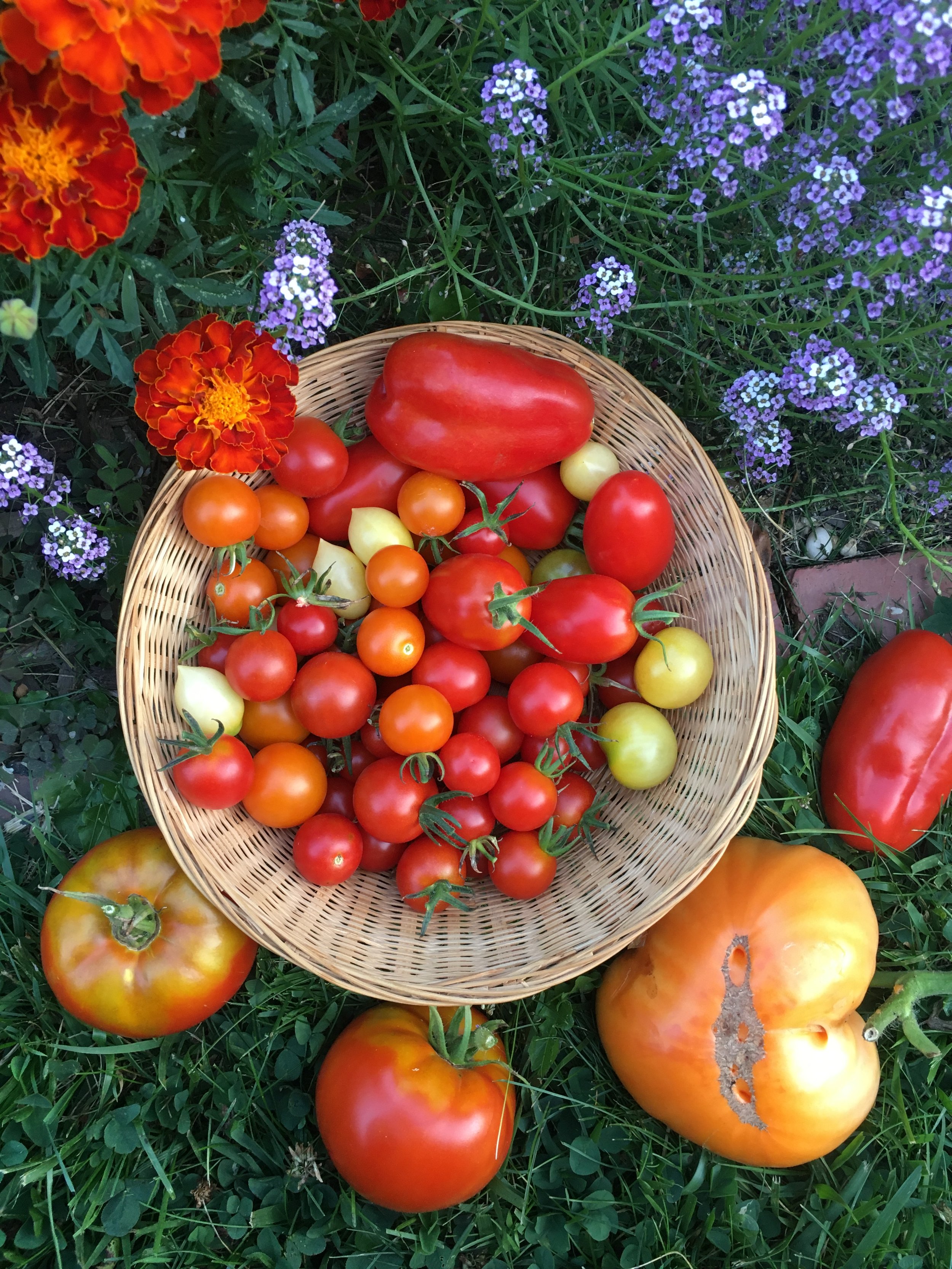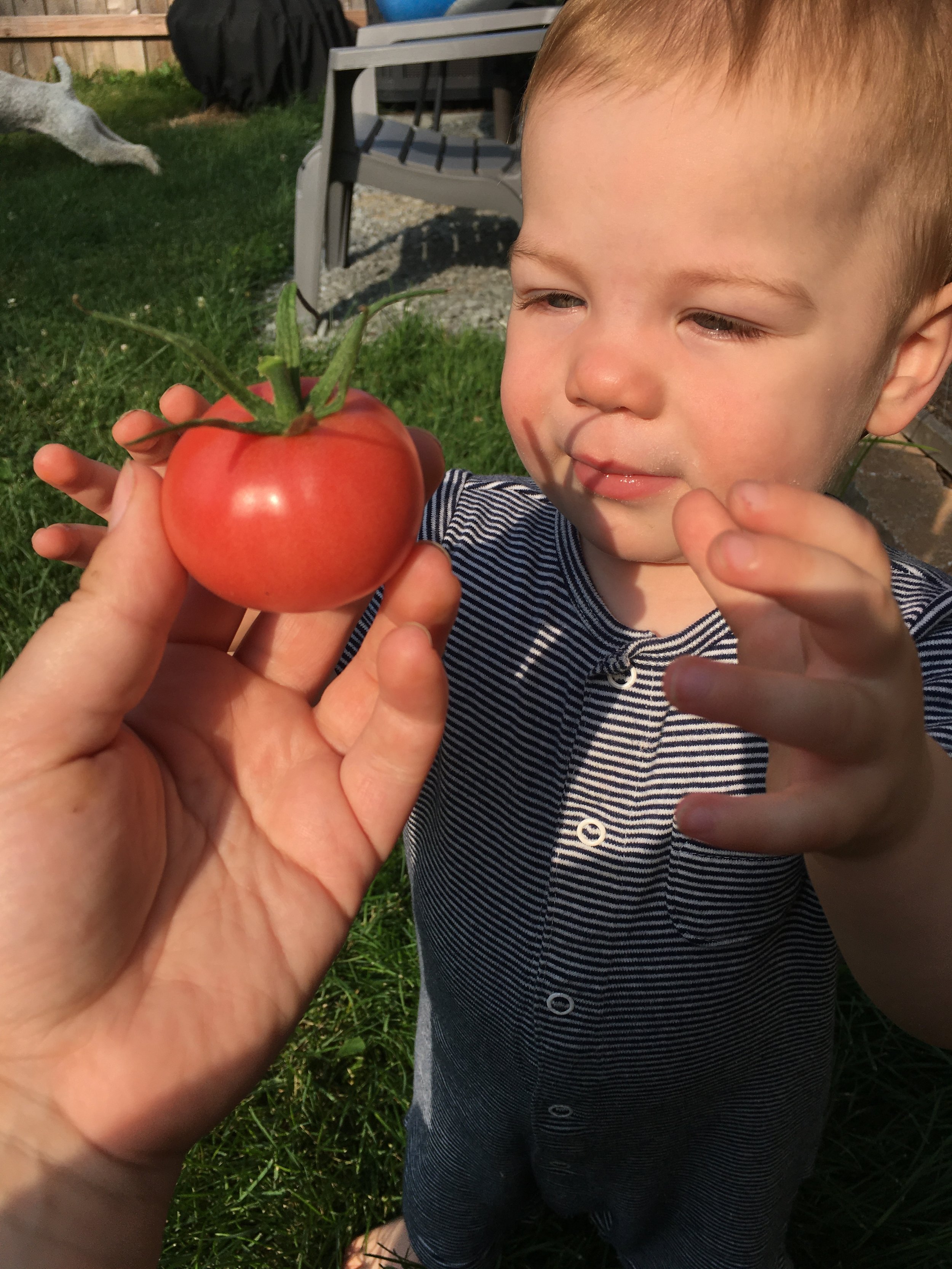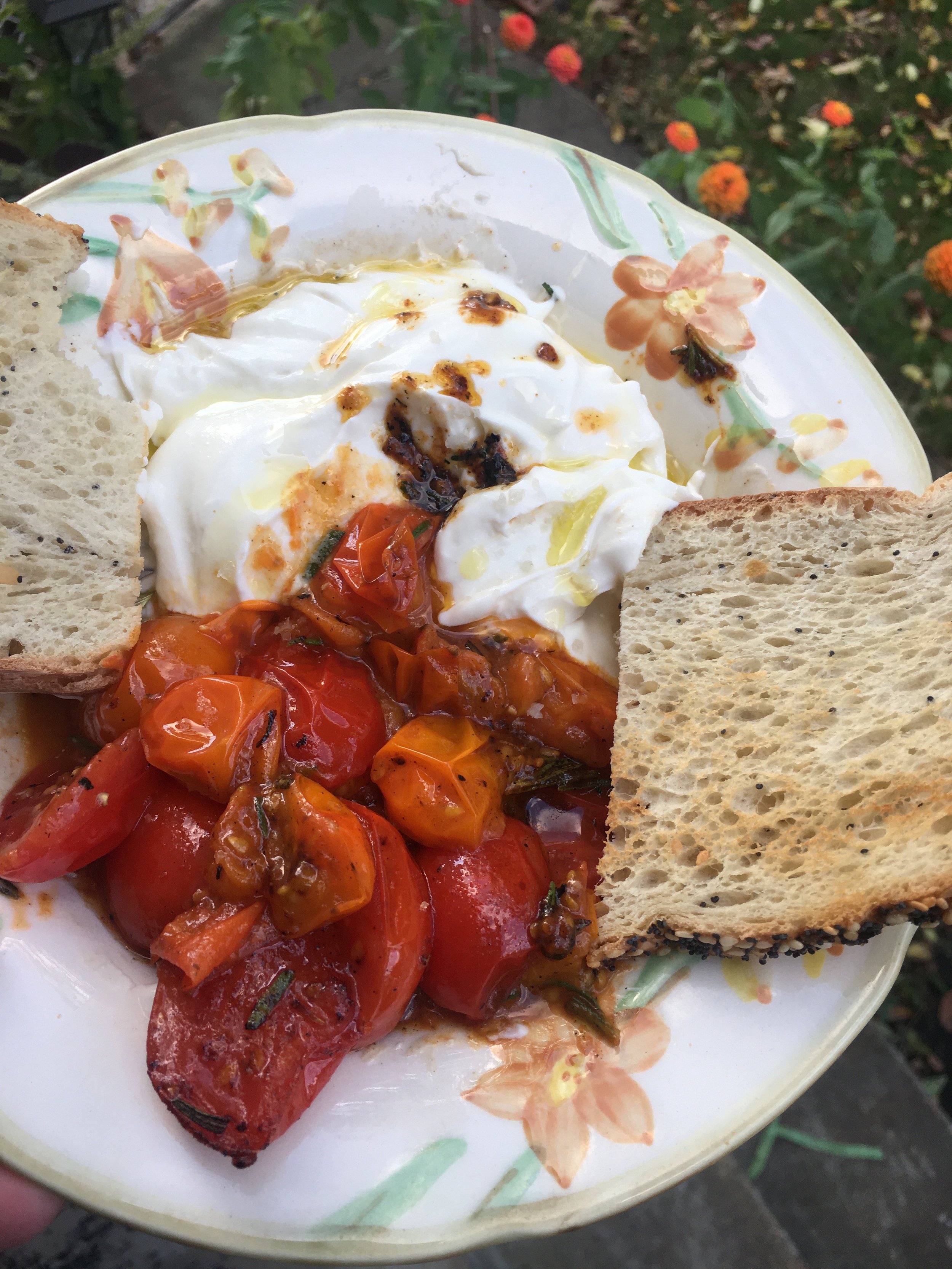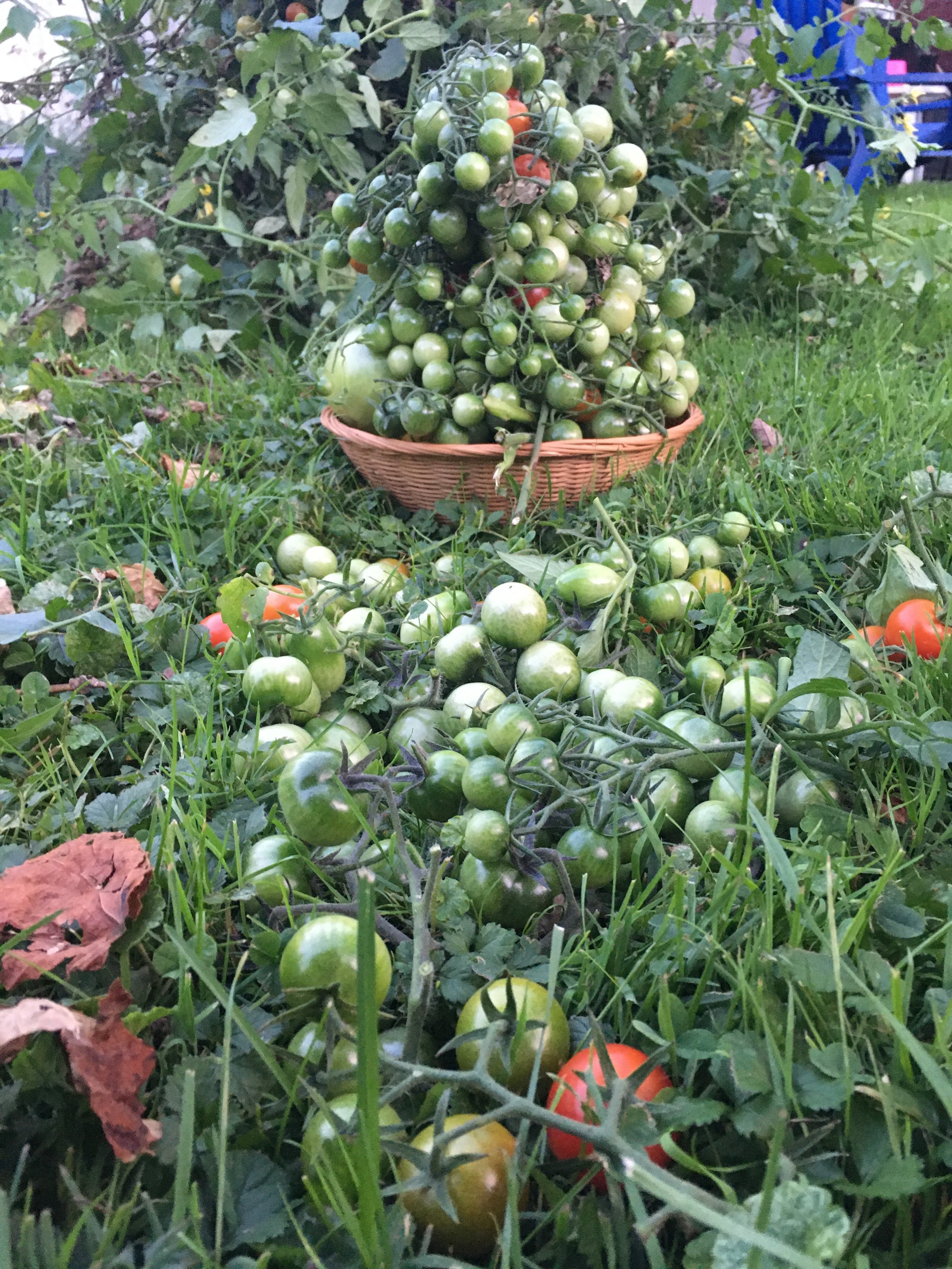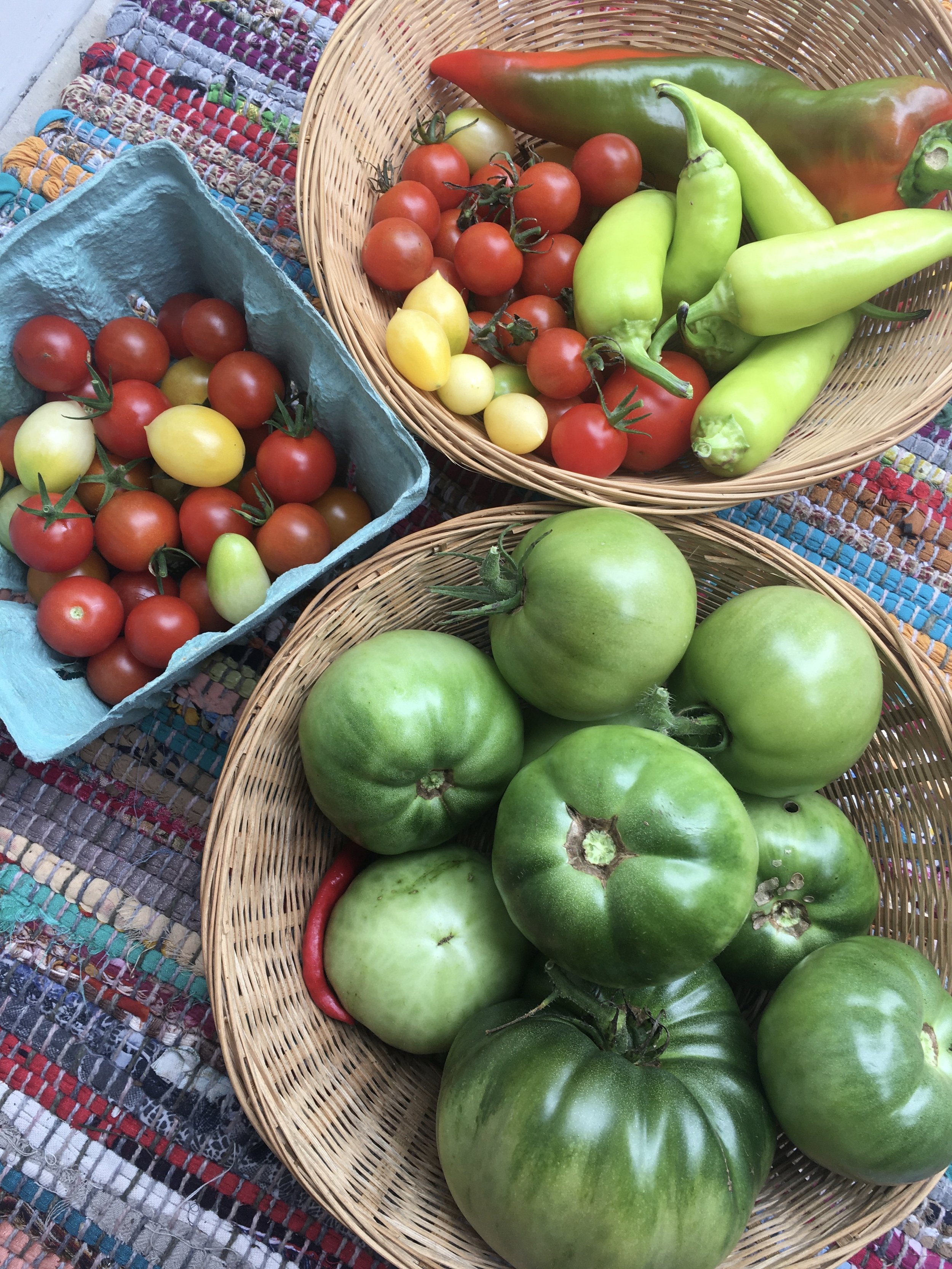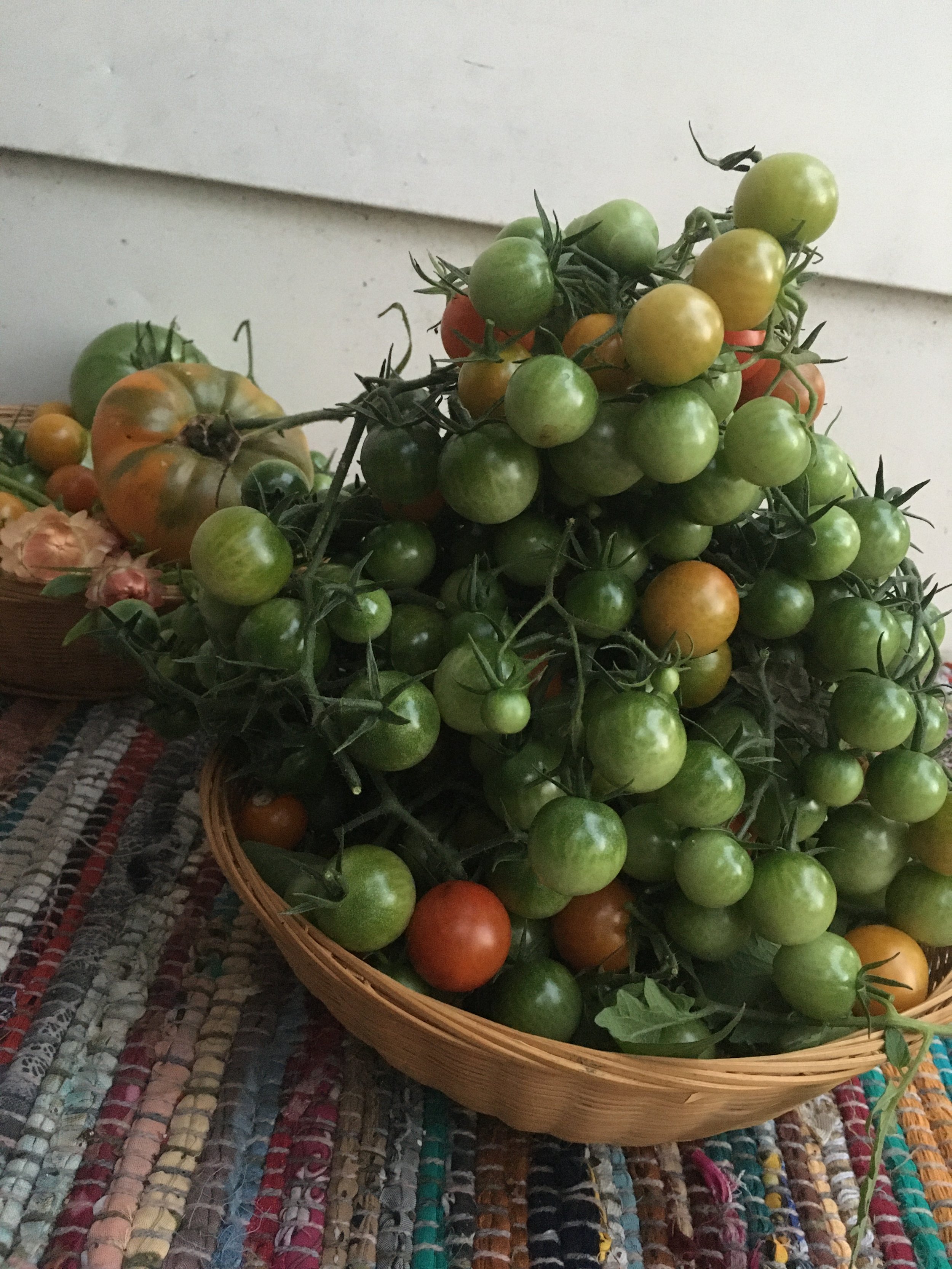Tomato Growing Tips
Tomatoes can be found in most summer vegetable gardens in our area. New gardeners are often excited to grow tomatoes and might be a little underwhelmed by their first results. Many experienced gardeners focus a lot of their energy on improving their tomato growing year to year. Here are some tips from our team of Swissvale gardeners.
What kinds of tomatoes are you going to grow?
Size/type (ex: cherry, grape, salad/snacking, sauce/paste, slicer)
Heirloom vs. Hybrid: “Heirloom” is not a specific tomato type or size – calling a variety “heirloom” means it is open-pollinated (meaning it relies on insect pollination) and at least 50 years old. Heirlooms can be any size or color. In contrast, a “hybrid” variety has been crossbred to take advantage of the best traits of each parent plant. You don’t have to pick heirloom or hybrid – some gardeners prefer to stick with one or the other, but most probably grow both.
What’s a “Beefsteak” tomato? “Beefsteak” refers to many varieties of big, “meaty” tomatoes that often weigh a pound or more, which is larger and heavier than other slicer/slicing tomatoes. Many “beefsteak” varieties are “heirlooms” but not necessarily – some are hybrids or are open-pollinated but too new to be called an heirloom. Some of the most popular “beefsteak” varieties are Brandywine, Cherokee Purple, and Mortgage Lifter, but sometimes a variety (especially at a big box store) will just be called “red beefsteak,” indicating it is a big red slicer variety. Big, beefsteak-type tomatoes are great for sandwiches.
Other tomato-related varieties to consider: ground cherries & tomatillos
Color (ex: red, orange, pink, yellow, green, black/purple, striped, etc.)
Indeterminate/Determinate: Determinate types usually stop growing at a shorter height and produce most of its fruit around the same time. Indeterminate types usually grow much taller and produce throughout the season. Both types usually require staking/support, with indeterminate types requiring taller support.
Where should you plant tomatoes?
Full sun = 8+ hours of direct sunlight
Rich soil: Work compost or soil amendments into the growing area, even if your soil looks healthy.
NOTE: You can grow tomatoes in the same place every year if your space is limited, but remember that tomatoes absorb a lot of nutrients and make sure you add a lot of new nutrients before a new planting.
Good drainage: Does water sit on top of your soil in puddles after a rain? That could indicate poor drainage.
Containers: Except for “dwarf” or container-specific tomatoes, only large containers with good drainage tend to work well for tomatoes. A 5-gallon container is probably the smallest size to consider – a 10-gallon or even 20-gallon container would be much better. In general, plants grown in containers need a lot more watering than plants grown in the ground, and that’s especially true of thirsty tomatoes. Make sure any container has drainage holes – add drainage holes if there’s not any or if the holes are really small.
Encouraging healthy growth throughout the season:
Start from seed or buy starts: Tomatoes are very affordable and easy to start from seed, but they do take a while to get ready for transplanting (on average 6 weeks). Most people only find starting tomatoes from seed successful if they start the seeds indoors in a very sunny window or under lights. Your tomato plants might need “potted up” (moved to a slightly larger pot) before they’re ready to go in the ground. If you don’t have a good set-up indoors, it’s usually better to buy transplants.
Transplant timing: A common new-gardener mistake is planting out tomatoes too early – tomatoes are very frost tender and can only be planted out after the last frost of the season. If there’s an unexpected late frost, it’s a good idea to cover the young plants.
Spacing: Try not to grow tomatoes too close together since they like space and tend to have more issues with blight and pests when spaced too close together. Depending on the type of tomato, 1 or 2 feet is standard (depending if you are going to prune to a single stem).
Deep planting: Tomatoes are unusual in that they really benefit from having their stems buried as much as possible. For most plants, it’s better to put them in the ground so that only the roots are buried, but tomatoes can grow additional roots along their buried stem. For robust plants, remove all but the top few leaves and bury it as deep as you can. This might be the most important and easy step you can take to get healthy, productive plants – it really makes a difference!
Support/trellis/cage: Technically you can let your tomatoes just sprawl out over the ground, but chances are you won’t get a very good harvest and the fruits will probably get eaten by animals and bugs. Tomatoes really benefit from vertical growth, and they won’t do that on their own. Some people like store-bought tomato cages, and other people construct other kinds of supports or trellises – there are a lot of options depending on your space and preferred look. A healthy indeterminate tomato plant can easily get around 8 feet tall. (Things to look up if you want to research options: Florida weave, tomato staking, DIY tomato cages, tomatoes on cattle or hog panels, square/folding tomato cage, …)
Mulch: Once your tomato plants are established and about 6-8 inches tall, you can add mulch around them to help keep moisture in the soil and to prevent weeds from competing with the tomatoes. A lot of gardeners use straw, woodchips, or a thick layer of compost. (Don’t use the color-dyed mulch you can buy at garden stores for this.)
Water: Tomatoes benefit from deep watering rather than more frequent surface watering. It’s good to focus on giving plants a lot of water every few days, rather than a little water every day, and making sure you’re watering enough to reach deep roots. Deep watering promotes root growth. Also, consistent watering (as opposed to switching between deep and shallow watering) helps prevent blossom end rot, a common tomato problem.
Pruning: Most new gardeners and a lot of experienced gardeners don’t prune tomatoes, and they will still get a lot of great tomatoes. However, if space is limited or if you want your best chance at large fruits, pruning can be a good idea. Look into pruning “suckers” or “single stem” pruning.
Keep it going: If you continue taking care of your plants, you might be able to harvest tomatoes all the way up to the first frost. You can keep “side-dressing” (adding compost or nutrients around the base of the plant) tomatoes every few weeks. Watch out for pests – if/when you see them, try to identify the pest quickly and find out how best to deal with it.
What if you just want to keep it really simple and low-maintenance and grow some nice tomatoes?
The most important things are probably 1.) plan in full sun (8+ hours of direct sunlight); 2.) plant deeply (bury as much stem as you can, with just the top 3-4 leaves above the ground); and 3.) water regularly.
Why do home-grown tomatoes usually taste so much better than most store-bought tomatoes?
Store-bought tomatoes are often picked while they’re still green and immature and then ripen while being transported. Also, supermarkets usually source varieties that ship well since they travel long distances, so they are usually firmer and more uniform rather than selected for flavor. One of the best things about growing your own tomatoes is gradually figuring out your preferences over the years and trying out new varieties every year.
Using your tomato harvest:
Salad (lettuce salads, Caprese salad, pasta/grain salads, bean salads, tabouleh, cucumber salads, Panzanella, etc.)
Fresh salsa
Fresh pasta or pizza sauce
Bruschetta (topping on toasted bread)
Fried green tomatoes (pick unripe tomatoes)
Stuffed tomatoes (usually roasted/grilled)
Soup (fresh tomato soup, gazpacho)
Tomato confit (slow roasted in oil, usually with garlic and herbs)
Tomato rice (Indian, Spanish, Persian...)
Tomato juice (on its own or for Bloody Mary)
Tomato pie, galette, or tart
Salsa or pico de gallo
Pasta or pizza sauce
Sun-dried/Oven-dried/Dehydrated
Canned whole, crushed or diced
Frozen whole (skin-on, with an “X” cut on bottom – when they thaw, the skin comes right off)
Tomato jam
Green tomato relish
NOTE: While looking for recipes, keep in mind that tomatoes are often preserved by first processing on the stove and then canning (water or pressure) OR storing in the freezer.

